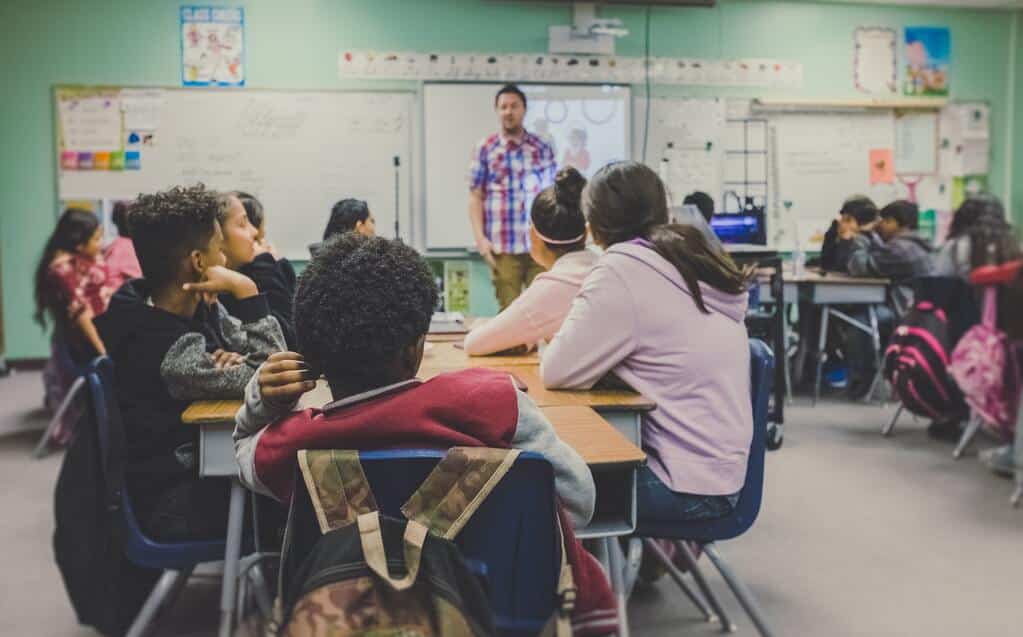Why Middle School Principals Should Prioritize SEL for Healthy Teacher-Student Relationship
Lauren Cleve, a teacher at Crissman Elementary, addresses many common concerns that teachers have had about their students during the transition from elementary to middle school. Cleve emphasizes that teaching during this transition requires a different set of skills, as students need more support. “As a new teacher to the upper elementary students, I quickly discovered that it takes different approaches to reach students at various grade levels” (Cleve 2012). Like Cleve, teachers across the board have noticed that there are various factors that make the transition into middle school particularly challenging for students. A new school environment, new teachers, and new peers all contribute to additional stressors and discomfort in school. Additionally, this period of development in children is critical for their development of self-identity and their identity in relation to their peers. Thus, this is the time when students are at the greatest risk of developing maladaptive behaviors.

Research indicates that student-teacher relationships serve as a protective factor against maladjustment in school. Cleve, and other teachers alike, recognize this. A close relationship with a teacher ensures that students feel comfortable in their classroom environment, whereas perceived conflict with them can increase classroom disruptions and hyperactive behavior, such as aggression, untimely talking, and overt inattentiveness (Longobardi 2016). The student-teacher relationship is critical for a student’s well-being and learning. However, teachers like Cleve have pointed out that when it comes to improving the student-teacher relationship, they are at a loss as to where to start. Research on teacher competence in social and emotional learning (SEL) shows that many educators report that they are inadequately trained in emotional health, feeling underprepared to support students in times of crisis (Bohnenkamp 2021). Many teachers and educators understand the importance of positive relationships with their students, they just lack the knowledge and resources to implement effective practices in order to do so (Duong 2019).
Teachers understand that improving the teacher-student relationship is possible with an implementation of a social and emotional learning (SEL) program, but are often overwhelmed by their demanding responsibilities and professional training, not having enough time to teach SEL. Principals have noticed teachers being overwhelmed too. Seventy-one percent of principals say that teachers do not have enough time to dedicate to teaching SEL. Yet, at the same time, 70% of principals still expect teachers to teach SEL. However, because of the limited time available for teachers, only 25% of principals say that their SEL implementation is fully realized (CASEL).

How can principals ensure that SEL implementation is fully realized without increasing the burden put on teachers? Fortunately, research also shows that student participation alone in social-emotional learning can serve as a preventative measure against the negative impacts teacher burnout can have on the student-teacher relationship (Sandilos 2020). Thus, teachers do not need to put in extra work to develop SEL curricula and teach their students SEL, they simply need to facilitate student learning of SEL.
With the facilitation of SEL, there will be less frequent classroom disruptions, which will reduce student-teacher conflict, in turn improving students’ perceived closeness with their teacher. Having an already established and developed SEL curriculum that teachers can facilitate and infuse into their existing curriculum is key to minimizing the burden put on teachers. Implementing SEL in improving the student-teacher relationship as additional training for teachers. With SEL, teachers like Cleve can have access to better classroom management and an improvement in their student-teacher relationships without the added strain of extra training outside of the classroom.
Are you a principal? Tell us what you think by filling out the survey.
References
Bohnenkamp, J. H., Schaeffer, C. M., Siegal, R., Beason, T., Smith-Millman, M., & Hoover, S. (2021). Impact of a school-based, multi-tiered emotional and Behavioral Health Crisis Intervention on school safety and discipline. Prevention Science, 22(4), 492–503. https://doi.org/10.1007/s11121-020-01195-3
Duong, M. T., Pullmann, M. D., Buntain-Ricklefs, J., Lee, K., Benjamin, K. S., Nguyen, L., & Cook, C. R. (2019). Brief teacher training improves student behavior and student–teacher relationships in middle school. School Psychology, 34(2), 212–221. https://doi.org/10.1037/spq0000296
Longobardi, C., Prino, L. E., Marengo, D., & Settanni, M. (2016). Student-teacher relationships as a protective factor for school adjustment during the transition from middle to high school. Frontiers in Psychology, 7. https://doi.org/10.3389/fpsyg.2016.01988
Poulou, M. S. (2016). Social and emotional learning and teacher–student relationships: Preschool teachers’ and students’ perceptions. Early Childhood Education Journal, 45(3), 427–435. https://doi.org/10.1007/s10643-016-0800-3
Sandilos, L., Goble, P., & Schwartz, S. (2020). Burnout and teacher–child interactions: The moderating influence of SEL interventions in head start classrooms. Early Education and Development, 31(7), 1169–1185. https://doi.org/10.1080/10409289.2020.1788331


